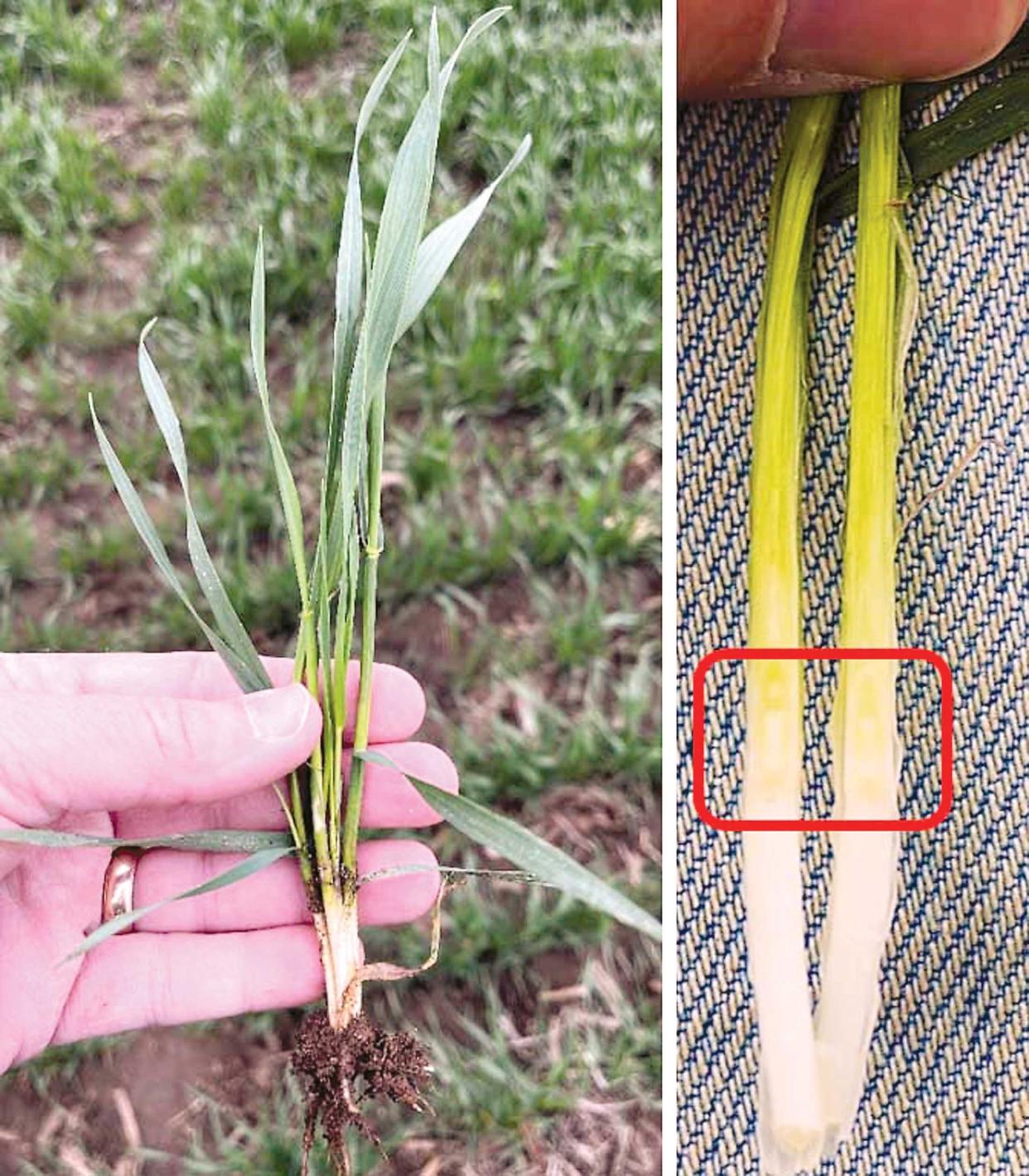Homegrown: Crops report for early May 2022

Roundup of crop conditions, pest situation and weather trends for early May.
More: Homegrown: Soybean-planting date, seeding rate and row spacing implications
Crops
Potato planting has made good progress within the past two weeks, but remains well behind normal.
Forage growth has been relatively slow thus far, although MSU Extension forage educator Phil Kaatz said freeze events last week should not be a problem, since temperatures overall this spring have remained cool. If a longer span of warmer temperature spurring rapid growth is followed by a hard freeze, that is when yield-impacting injury can occur.
Wheat in Michigan was rated at 38% good to excellent and holding steady, as of April 25. Later-planted fields visited in St. Joseph County were approaching jointing (Feekes 6) as the first node was not yet visible. However, the growing point (aka primordial head, found by splitting the main stem longitudinally) is at the soil surface, so most wheat fields should have reached jointing by now. Fields planted early last fall will be ahead by a few days, and differences exist among varieties according to MSU Extension wheat specialist Dennis Pennington.
According to Shawn Conley, soybean and small-grains agronomist at University of Wisconsin, nitrogen (N) apps should be made by this point as N-uptake increases following this stage, and wheel tracks after jointing could result in broken stems and reduced yield potential.
Growth regulator herbicide should be applied before the first joint develops, since the synthetic auxins could affect the growing point.
If the stand is dense and lush, begin scouting for early signs of disease pressure from Septoria or powdery mildew and assess whether an early fungicide application is warranted. If planting was delayed in the fall and N was not applied early in the spring, growth has likely not been that vigorous as temperatures have been mostly below normal over the past month.
Marty Chilvers, field crop pathologist at MSU Extension, said he has not seen disease in research plots around the state yet, but once warmer temperatures arrive, farmers should begin scouting for disease signs and symptoms.
Insects
Moth trap counts this past week saw an uptick as predicted with the strong southerly winds in late April. While counts are still in the single digits per trap in Michigan, Purdue’s trapping network recorded several dozen black cutworm moths per trap in northern Indiana (LaPorte, Lake, Whitley) while true armyworm counts were in double digits and increasing at the two northern research stations for the week ending Apr 27.
John Obermeyer, Purdue’s crop entomologist, gave a recent reminder about the nature of moth trapping: “Monitoring moth arrival, and numbers captured, is an inexact science. We cannot predict with certainty that high moth counts will equate to high pest damage. Instead, it is best to understand the pest and how the next few weeks unfold. Should the moth flight continue at this pace AND fields remain untouched, then you might better understand why future articles might sound as though the ‘sky (or moths) is falling."
Weather
Temperatures in the past week were below normal in the region. A Canadian-origin air mass over the Great Lakes region brought below freezing temps for essentially the entire state last week—unusual for this time of year. Lows are expected to be well above 40 degrees and highs will increase steadily into the 70s within the coming week. Current forecast is a return to normal temperatures by the second week of May and even to above-normal temperatures toward the middle of the month.
Soil temperature dropped as air temperature dropped toward the end of April as expected, but it has rebounded and will remain warm enough for planting with a reasonable expectation of emergence within two weeks. Assuming the current forecasts hold, soil temp should remain in good shape as planting ramps up.
Within the past week, precipitation ranged from 0.25-inch in southern Hillsdale County to as much as 1.5 inces in parts of St. Joseph County. Rainfall over the past two weeks has ranged from 50% below normal toward the southeast to 150% of normal toward the northwest part of the region.
Soil moisture remains high throughout most of southern Lower Peninsula. Soil moisture in the wheat growing regions of the Great Plains remains extremely low, and with most of that region in D2-D4 drought, the wheat crop may be severely impacted this year. The forecast for this week calls for 1.25-2.0 inches of rain, although half of that will have fallen a week ago with just under an inch predicted. The mid-range outlooks call for drier than normal conditions heading into the second week of May followed by near-normal rainfall by the middle of the month.
This article originally appeared on Sturgis Journal: Homegrown: Crops report for early May 2022

